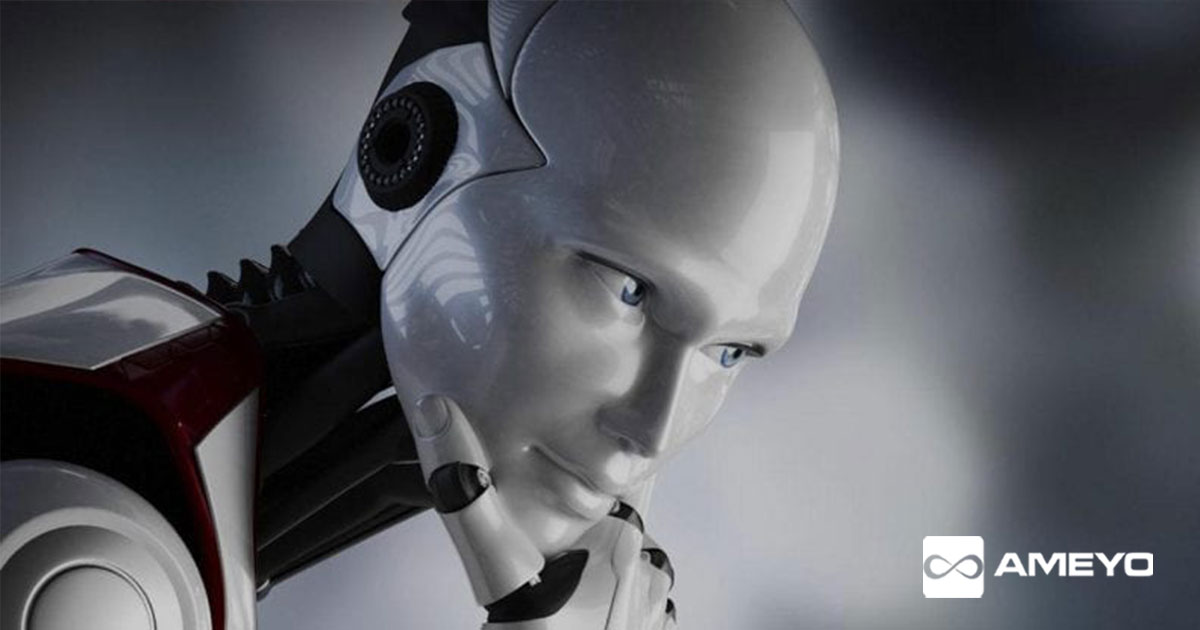The Beginning
From antiquity, man has been in search of perfect assistance, the one who would do things for him in the easiest and best possible way. Wilhelm Schickard’s drawings of a not so reliable calculating clock are perhaps the first recorded step towards a Thinking Aide for man, further strengthened by the Boolean and Turing theories. But it was not until 1956, that a dedicated field of study aptly named as Artificial intelligence (AI), started solving complex problems like proving logical theorems, solving algebraic equations, speaking a language, designing a computer winning checkers etc., with a “brain” of its own. Research in AI was making long strides, even as commercial robots and movie based Cyborgs (Terminator), and Corporations (Skynet) awed the common man.
Now
Today with its self-driven car prototypes, advanced voice recognition, near accurate facial recognition etc., AI has truly transformed the way data is looked upon, analyzed, decisions made and acted upon.
When Warranty usurped Guarantee
A time was there when all the products sold were guaranteed; confidence was such that the after sales service or upgrading was not thought of at all. The product lifecycle was long. Now that the scenario is changing so fast, with many products becoming outdated as early as the next day, there are rarely guarantees, only warranties. With the product lifecycle shrinking, and each of its individual components’ having different warranties, focus came automatically to customer retention, and along with it, many cross-sell and up-sell opportunities
Customer Care to Customer experience
The first generation customer care was provided by “call centers”, which used to provide the same set of voice messages to random customers. Customer service demand here was met real time on a first come first serve basis with no regard to any segmentation; it was plain simple sales and service.
The contact centers came in the mid 1990s, with the Customer Relationship Management (CRM) thrust. It incorporated Computer Telephony Integration (CTI), IVR, routing based on skill, Workforce Management (WFM) etc. Here too, because the older generation metrics like oldest call waiting, service level, average handle time etc., were used, customer rarely was satisfied.
With the emergence of social media and smart phones, a new customer who now have a lot of options evolved. The customers’ expectations, preferences (generational too) and choices grew exponentially. Customer care strategies had to be reworked to include physical and virtual touch points, with each interaction proving to be vital. Newer metrics like First contact resolution (FCR), Net promoter score (NPS), and Reduction in customer effort (RICE) came into being.
Paradigm Shift
Till not too long ago, marketers used to place their products using the standard demographics, and often the customer ended up buying a product or service he or she did not want, that is if the seller is good; typically, the call center personnel have to bear the brunt of the frustrated customer. The Marketing team and the Service team had different set of KRAs and never used to interact. No one knew exactly what to sell to whom? With everyone practically leaving a lot of digital footprint, data was accumulating. But how does one interpret data?
Here begins the application of AI to CRM, which paved the way for the idea and term Customer Experience. AI does not do much; it takes the data, selects, interprets and analyzes the data, acts on the data, and or gives suggestions to make informed decisions.
Selective Automation
A typical Customer Experience Center, has to deal with all sorts of people, and a good number of them are old school, the like the personal touch. So AI classifies the interactions into two
- Routine ones, that could be automated
- Complex, high-value interactions, and specific cases too, would be handled by skilled, trained customer service experts, armed with smart pieces of information provided by the AI
Divisions Merge
To make the best use of AI, the teams that used to operate without communicating with each other, like the marketing and the service teams, would have to break their walls, and collaborate for a combined – front and back end operation, the whole cycle for the customer with both assisted interactions and self-service.
Tapping into Big Data, ahem (Behavioral and Browsing data)
Ai interprets Big Data, a person’s browsing history, last known location, etc., and can arrive into what he or she is looking for, with a fair amount of accuracy. This marks the shift towards highly target oriented marketing strategy, for a specific user or set of users.
Pre-emptive interactions and elimination of a large amount of unnecessary service interactions
Predictive capabilities of AI could be tapped into, providing a great value for customers. For example, a customer, who checks his balance by calling the every fortnight, can be provided with a fortnightly message, before he makes the call
Self-diagnosing and fixing products could reduce many customer care and technical support calls. The possibilities are that a device can proactively order its replacement parts and have them shipped to the door, seems not too futuristic.
However, if a customer calls, the service agents will have much smarter information to cater to the specific need which will result in faster and more efficient fixing of the issue.
Improvised reactions to real-time situations
Let’s say a customer uses a phrase “Manager” or “Supervisor” on a call, the AI identifies this and connects the supervisor on the call, to avoid escalation
AI automates Forecasting, routing. and many mundane jobs
Familiar processes like skill based routing, forecasting etc., will become automated, and will need a fewer number of people. The rule–based systems will give way to more cognitive systems which allow more intelligent predictions and reactions. AI will make many monotonous jobs obsolete and free up the workforce for more creative or innovative tasks
The customer will not feel the difference
- Intelligent IVRs maintaining exchanges within an automated system and falling back to human support when it is required
- Analytics of real-time speech would help an agent in front of a customer, augmenting the interaction with coaching and guidance from an intelligent system, interpreting the call in real time
In short, one won’t know if an AI enabled Customer Experience program is a success, it will be noticed only if it inadequately implemented.


